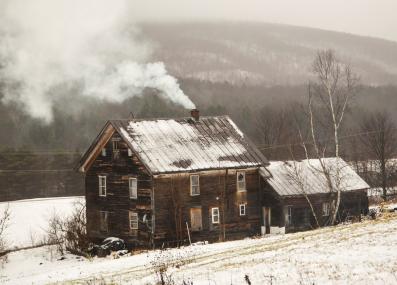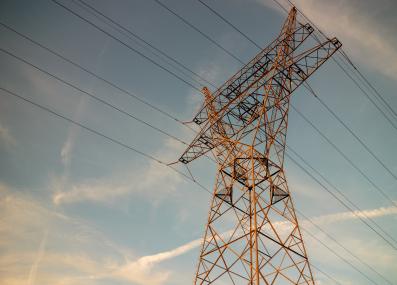Have a question?
What are the best policies to transition home heating away from oil and gas?
Subsidies for electric heat pumps can effectively push out oil and gas heating over time, especially if paired with state- and utility-run measures to support the electric grid in cold weather.
February 28, 2023
Globally, heating buildings is one of the largest sources of CO2 emissions.1 This is especially true in places where most homes use natural gas or, worse, oil for their heat. In Massachusetts, where these heating fuels are used by around 85% of households, oil and gas heating was responsible for 30% of statewide emissions in 2020.2
For these areas, the way forward is a combination of two strategies: better heating energy efficiency in homes through more insulation and air sealing; and the widespread deployment of electric heat pumps to replace gas, oil, and propane heat. This electric heating creates no emissions in the home at all, and can run on clean hydroelectric, solar, and wind energy as these technologies are added to the electric grid.
Heat pumps both heat and cool homes by circulating air. They contain a very cold refrigerant—even colder than winter air—which, during the winter, absorbs heat from outside and evaporates. The gaseous refrigerant then runs through an electric condenser that raises it to a high pressure and temperature, and is pumped inside, where it releases the heat it has absorbed. In the summer, the reverse happens, and the heat pump works as an air conditioner.
Harvey Michaels, a lecturer in energy management at MIT and director of the Clean Heat Transition Project, has crunched the numbers and found that, for Massachusetts to do its fair share in meeting the world’s climate goals, 4% of homes every year must convert to heat pumps. “If we can reach that rate, then over 10 years, you would get 40% of the homes—about a million homes in Massachusetts—converting to heat pump heat and about two million in the six New England states. If we can find a way to do it that works well for people financially and for their comfort, then perhaps other places with similar climates will do the same.”
The most obvious way to achieve this is to subsidize heat pumps, so they become the cheapest choice when people’s old furnaces or air conditioners break down. In Massachusetts, subsidies via both Mass Save ($10,000 per home) and the Inflation Reduction Act federal tax credits ($2,000 or more) are encouraging people to put in cold climate heat pumps, which are specialized heat pumps that can work even when temperatures are below 5° F. The incentives also encourage the many homes in Massachusetts that don’t have air conditioning, but want it for today’s hotter summers, to instead buy heat pumps.
Thanks to these subsidies and a growing interest in climate solutions, heat pump installations are booming. According to a study done by Michaels, there’s a market of about 100,000 homes per year eager to install heat pumps in Massachusetts alone. The demand, says Michaels, has actually outstripped the supply of both equipment and service people in states like Massachusetts and New York.
While this is incredibly encouraging, Michaels says we need to figure out a few things so that heat pumps don’t overwhelm the electric grid during the winter.
A major issue is that heat pumps get less efficient when temperatures are extremely cold (think below 5° F), so they start making huge demands on the electric grid, increasing the risk of power system failures. In newer buildings this is less of an issue, thanks to building codes that make them so energy efficient a heat pump alone can take care of heating.
Older homes can achieve this same energy efficiency with a deep retrofit, which makes them more insulated and airtight. “But most homes aren’t going to do that,” says Michaels.
Even after heat pumps are installed, about 75% of homes keep their fuel-based system as a backup. This may seem contradictory given our climate goals, but Michaels explains that in the short term this is a good solution. He is researching a system where utility companies would be able to decide which heating system is on, letting them turn off heat pumps and use the older heating system for rare extreme cold events.
“From a climate standpoint, you’re using 90% less of the old fossil fuel,” says Michaels. He adds that, when and if carbon-free alternative fuels reach the market, the whole system could eventually be made free of fossil fuels.
There’s also an alternative that a few people are trying: ground source or geothermal heat pumps. While normal heat pumps use outside air to heat homes, these heat pumps circulate water into the ground with a deep well where temperatures in Massachusetts are a constant 50° F year round. (Depending on how far you are from the equator, ground temperatures range from 45° F to 75° F.) With geothermal heat pumps, both heating and air conditioning can be generated with much less electricity than air heat pumps.
Geothermal heat pumps work especially well when it’s extremely hot or cold outside, so they make fewer demands of the power grid. “With ground source pumps, we don’t need a lot of power, even in the middle of the coldest winter days,” explains Michaels. “So that ends up being a nice solution.” Homeowners can install their own ground source heat pumps, but Michaels is involved in something bigger: a first-of-its-kind pilot program in Framingham, Massachusetts, that’s connecting whole neighborhoods in a common network of geothermal water loops.3 Construction of these Networked Geothermals, or GeoNets, is expected to start in spring 2023. If it works, GeoNets can be a heating model that other cities and states can adopt, and an alternative to subsidizing heat pumps one home at a time.
Thank you to Jill Stoddard of Northampton, Massachusetts, for the question. You can submit your own question to Ask MIT Climate here.
1 International Energy Agency: Heating—Tracking Report September 2022. Accessed February 28, 2023.
2 WBUR: "What to know about Massachusetts' new 2025, 2030 'Clean Energy and Climate Plan.'" July 5, 2022.
3 Eversource: Geothermal Pilot Program in Framingham.










